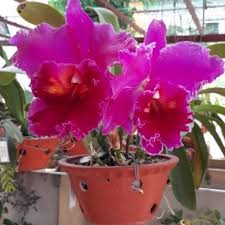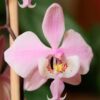# The Development of the White Egg Orchid in the Floral Industry

The White Egg Orchid, known scientifically as *Dendrobium*, is a highly regarded species in the floral industry, celebrated for its exquisite beauty and diverse applications. This orchid, characterized by its elegant white blooms and unique growth patterns, has garnered significant attention from growers, florists, and horticultural enthusiasts. This article will explore the development of the White Egg Orchid within the floral industry, discussing its cultivation, commercial significance, market trends, and the challenges and opportunities that lie ahead.
## Table of Contents
1. **Introduction to the White Egg Orchid**
– 1.1 Taxonomy and Characteristics
– 1.2 Historical Significance
2. **Cultivation Practices**
– 2.1 Growing Conditions
– 2.2 Propagation Techniques
– 2.3 Pest and Disease Management
3. **Commercial Significance**
– 3.1 Demand in the Floral Industry
– 3.2 Export Markets
– 3.3 Economic Impact
4. **Market Trends and Consumer Preferences**
– 4.1 Popularity Among Florists
– 4.2 Innovations in Orchid Breeding
– 4.3 Sustainable Practices in Orchid Cultivation
5. **Challenges Facing the Industry**
– 5.1 Environmental Concerns
– 5.2 Competition from Other Floral Species
– 5.3 Market Fluctuations
6. **Future Directions for the White Egg Orchid in the Floral Industry**
– 6.1 Research and Development
– 6.2 Expanding Market Opportunities
– 6.3 Education and Awareness
7. **Conclusion**
– 7.1 Summary of Key Points
—
## 1. Introduction to the White Egg Orchid
### 1.1 Taxonomy and Characteristics
The White Egg Orchid belongs to the *Dendrobium* genus, which encompasses a diverse group of orchids with over 1,800 species. Known for its stunning white flowers that often feature a delicate fragrance, the White Egg Orchid has become a favorite among orchid enthusiasts and florists alike. These orchids are typically epiphytic, thriving in tropical and subtropical climates, where they can be found growing on trees and shrubs.
### 1.2 Historical Significance
The cultural significance of the White Egg Orchid extends back centuries. In various Asian cultures, orchids symbolize beauty, elegance, and refinement. They are often used in traditional ceremonies and are regarded as auspicious gifts. The rise of the floral industry has further popularized these orchids, leading to their incorporation into various floral arrangements, events, and personal spaces.
## 2. Cultivation Practices
### 2.1 Growing Conditions
To thrive, the White Egg Orchid requires specific growing conditions, including:
– **Temperature**: These orchids prefer a temperature range of 65-85°F (18-29°C) during the day and slightly cooler at night.
– **Humidity**: A humidity level of 50-70% is ideal for optimal growth.
– **Light**: Bright, indirect sunlight is essential. Direct sunlight can scorch the leaves, while too little light can inhibit blooming.
– **Watering**: Regular watering is necessary, but the medium should be allowed to dry slightly between waterings to prevent root rot.
### 2.2 Propagation Techniques
Propagation of the White Egg Orchid can be achieved through several methods:
– **Division**: Mature plants can be divided into smaller sections, each with roots and pseudobulbs, to create new plants.
– **Cuttings**: Stem cuttings can be taken and rooted in a suitable medium to produce new orchids.
– **Tissue Culture**: Advanced horticultural techniques, such as tissue culture, allow for mass propagation of disease-free plants, enhancing the availability of this orchid in the market.
### 2.3 Pest and Disease Management
Effective pest and disease management is crucial for successful cultivation. Common pests include:
– **Aphids**: Small insects that can cause damage to new growth and flowers.
– **Mealybugs**: These pests can be identified by their white, cotton-like appearance and can weaken the plant by feeding on sap.
– **Fungal Infections**: Overwatering or poor air circulation can lead to fungal infections, such as root rot.
Regular monitoring and the use of organic pest control methods can help maintain healthy plants.
## 3. Commercial Significance
### 3.1 Demand in the Floral Industry
The White Egg Orchid has become increasingly popular in the floral industry, with demand driven by its beauty and versatility. These orchids are commonly used in:
– **Bouquets**: Their elegant appearance makes them a popular choice for bridal bouquets and formal arrangements.
– **Decorative Displays**: Florists often use White Egg Orchids in centerpieces and decorative displays due to their stunning visual appeal.
– **Gifts**: The symbolic meaning of orchids as gifts contributes to their demand, particularly during holidays and special occasions.
### 3.2 Export Markets
The global market for orchids has expanded significantly, with countries like Thailand, Taiwan, and the Philippines being major exporters of the White Egg Orchid. The demand for these orchids in markets such as North America, Europe, and Asia has led to a flourishing export business.
### 3.3 Economic Impact
The cultivation and sale of the White Egg Orchid contribute significantly to the economy. The floral industry provides jobs for thousands of individuals, from growers to retailers. Additionally, the sale of these orchids generates revenue for local economies, particularly in regions where orchid cultivation is a major industry.
## 4. Market Trends and Consumer Preferences
### 4.1 Popularity Among Florists
Florists have embraced the White Egg Orchid for its unique aesthetic qualities and long-lasting blooms. The trend of incorporating orchids into wedding and event designs has further increased demand, making them a staple in the floral industry.
### 4.2 Innovations in Orchid Breeding
Advancements in orchid breeding have led to the development of new cultivars with enhanced characteristics, such as:
– **Color Variations**: Breeders are creating hybrids with different colors and patterns, expanding the market appeal of the White Egg Orchid.
– **Improved Resilience**: New breeding techniques are also focused on developing more resilient varieties that can withstand environmental stressors.
### 4.3 Sustainable Practices in Orchid Cultivation
As consumers become more environmentally conscious, there is a growing demand for sustainably produced orchids. Many growers are adopting eco-friendly practices, such as:
– **Organic Fertilizers**: Utilizing organic fertilizers reduces the environmental impact and promotes healthier plants.
– **Water Conservation**: Implementing efficient irrigation systems helps conserve water resources in orchid cultivation.
## 5. Challenges Facing the Industry
### 5.1 Environmental Concerns
Environmental issues, such as habitat destruction and climate change, pose significant challenges to orchid cultivation. As natural habitats are altered, the availability of wild orchids diminishes, impacting genetic diversity and the ability to produce new cultivars.
### 5.2 Competition from Other Floral Species
The floral market is highly competitive, with numerous species vying for consumer attention. The White Egg Orchid faces competition from other popular flowers, such as roses and lilies, which may impact its market share.
### 5.3 Market Fluctuations
Economic fluctuations can affect consumer spending on floral products. During economic downturns, the demand for luxury items like orchids may decline, leading to challenges for growers and retailers.
## 6. Future Directions for the White Egg Orchid in the Floral Industry
### 6.1 Research and Development
Continued research and development are crucial for the future of the White Egg Orchid. Studies focusing on:
– **Disease Resistance**: Understanding the genetic factors that contribute to disease resistance can enhance the resilience of the White Egg Orchid.
– **Sustainable Cultivation Techniques**: Research into sustainable practices can help growers adapt to environmental challenges.
### 6.2 Expanding Market Opportunities
Exploring new markets and applications for the White Egg Orchid can drive growth. Potential opportunities include:
– **Corporate Gifting**: Orchids are increasingly used in corporate gifting, providing an avenue for expansion.
– **Online Sales**: The growth of e-commerce presents opportunities for orchid growers to reach a broader customer base.
### 6.3 Education and Awareness
Educating consumers about the care and value of the White Egg Orchid can foster a deeper appreciation for these beautiful plants. Workshops, online resources, and community events can promote awareness and encourage responsible purchasing.
## 7. Conclusion
The development of the White Egg Orchid in the floral industry is a testament to its beauty, versatility, and cultural significance. As demand continues to grow, it is essential to address the challenges facing this orchid through sustainable practices, innovation, and education. The future of the White Egg Orchid in the floral industry is promising, with opportunities for growth and expansion that will ensure its place as a beloved floral choice for years to come.
By fostering a deeper understanding of this exquisite orchid and promoting responsible cultivation practices, we can help ensure the continued success and sustainability of the White Egg Orchid within the floral industry.

